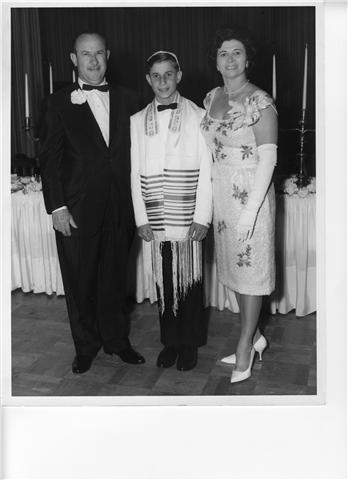
By Shana LI VIGNI
Friday at sundown marked the beginning of Rosh Hashanah, one of the holiest and most solemn of the Jewish holidays. Rosh Hashanah – also spelled Rosha Shanah – translates to “first of the year,” “the beginning of the year,” “day of judgment” and “the Jewish New Year.” The first two days are a celebration of family, friends and making New Year’s resolutions; the following eight days are dedicated to self-examination, repentance, reflection and prayer. The Jewish belief is that this is the time that God judges each person and decides his or her fate for the coming year and records it in the Book of Life. The 10 days end with Yom Kippur, the final and most intense day of fasting and on-going prayer.
The shofar is a hollowed out ram’s horn and the world’s oldest wind instrument. It is blown once to begin the two day celebration, blown three times on the second day and once again to mark the end of of these High Holy Days.
Rosh Hashanah and Yom Kippur are the only two holidays that are purely religious, unlike Passover and Sukkot which are tied to historical and agricultural events.
Food, family, friends and celebration are a major part of Rosh Hashanah and the meals are prepared with certain foods that celebrate this ‘new year.’
Challah is a round braided bread which is eaten every Sabbath and holiday and formed into a circle on Rosh Hashanah to symbolize the circle of life.
It’s common to begin a meal with a plate of apples and dish of honey which is passed around the table as an omen of the sweetness for the coming year. Pomegranates, dates, leeks and beets are all symbolic foods of the celebration. Fish heads are a symbol of abundance and fertility and represent the “head” of the New Year. A special prayer is said when eating them, requesting God to make the Jews as fruitful and abundant as the fish in the sea.
Former Glendale residents George and Florence Coutin had attended Temple Sinai since 1950. Their seven children, including son Leonard, were instilled with an orthodox Jewish life that included much meaning and love. All of their children celebrated their 13th birthday with a bat or bar mitzvah – a rite of passage – which was very important to Leonard’s father.
Leonard Coutin and his family also live in Glendale. He still sees some of his friends at Temple Sinai, kids he knew since he was in kindergarten. His mother, Florence, made a big impression in his Jewish upbringing. She served her Temple as president of the Sisterhood and single-handedly developed a commercial kitchen for the preparation of holiday meals at the Temple. Florence Coutin passed away earlier this year and will be remembered during the holidays.
“Religion, for me personally, is important but I’m a cultural Jew,” explained Coutin. “I really believe in the traditions, I really believe in the passion for all things that stood for all this time. It’s not that I’m a devout Jew and follow every tradition, but what is important is I base our family in the understanding of giving them something out there – the morals and a guideline. I find that religion really helps in your family.”
There are five Jewish holidays celebrated in the months of September or early October – Rosh Hashanah, Yom Kippur, Sukkot, Shemeni Atzeret and Simchat Torah. The typical greeting on Rosh Hashanah is, “May you be inscribed in the Book of Life.”
Next week – Yom Kippur celebrated in the foothills.
